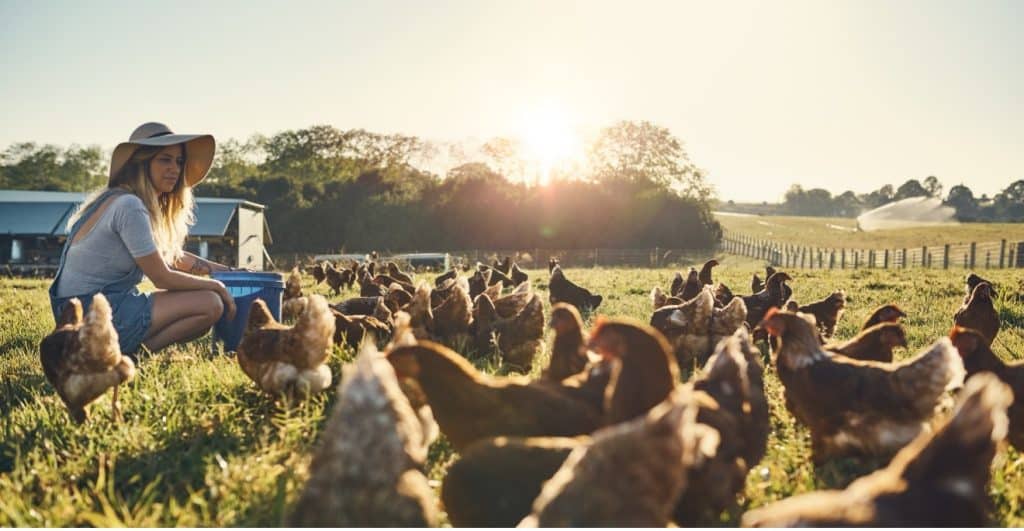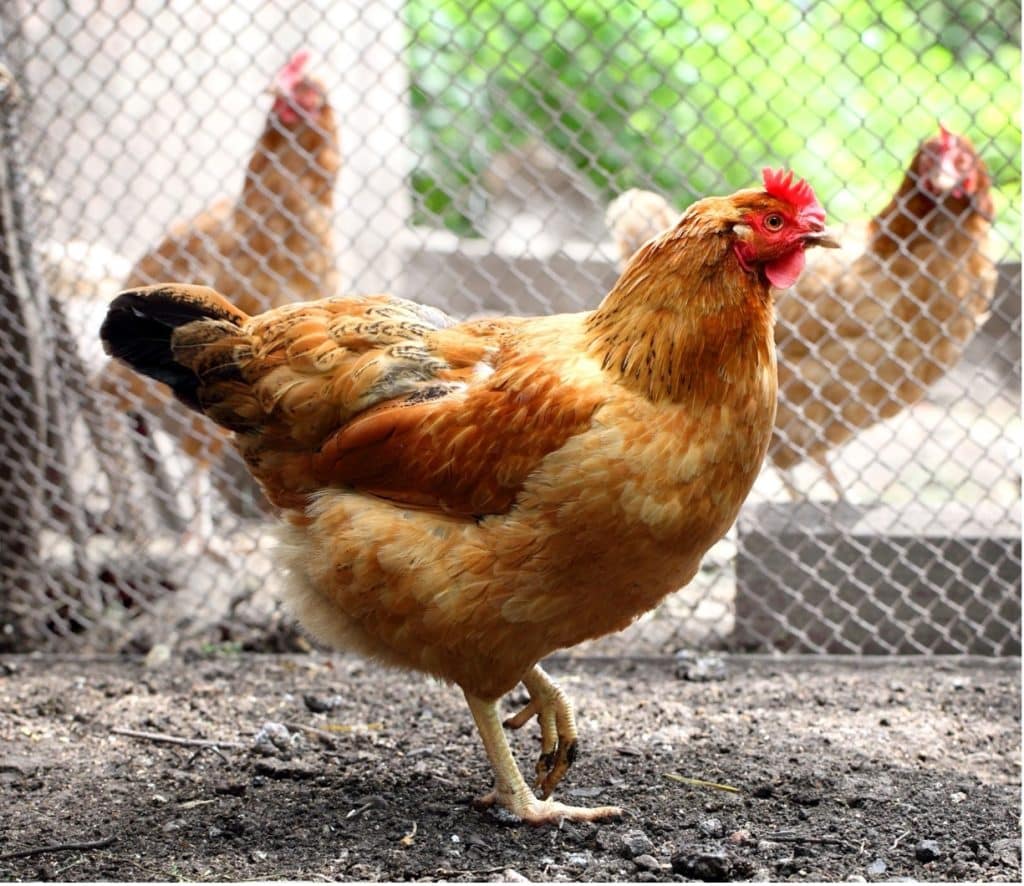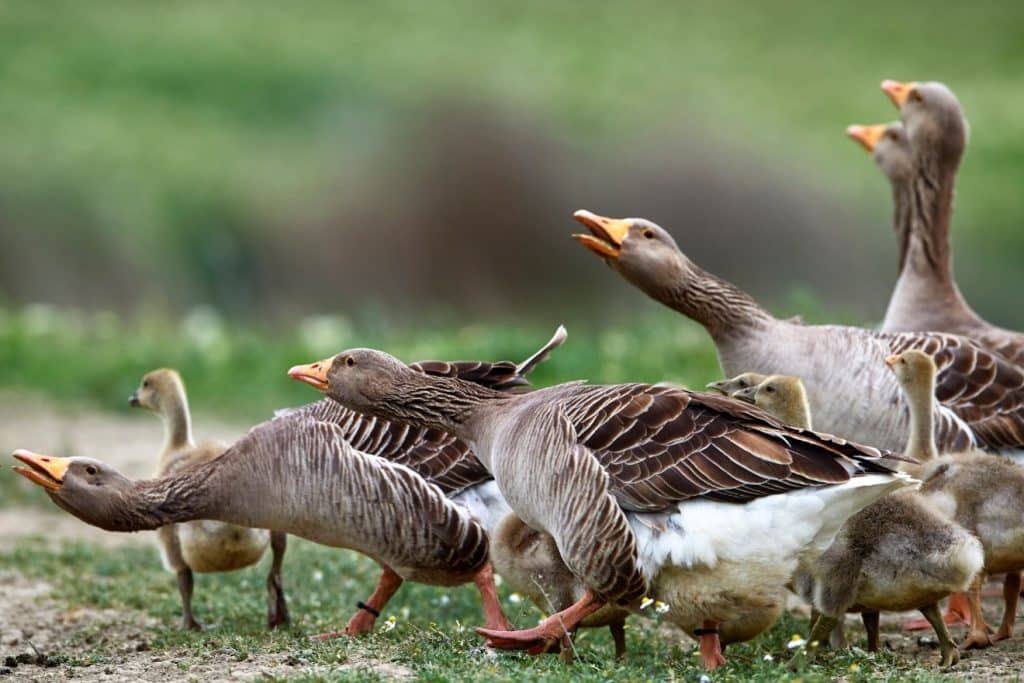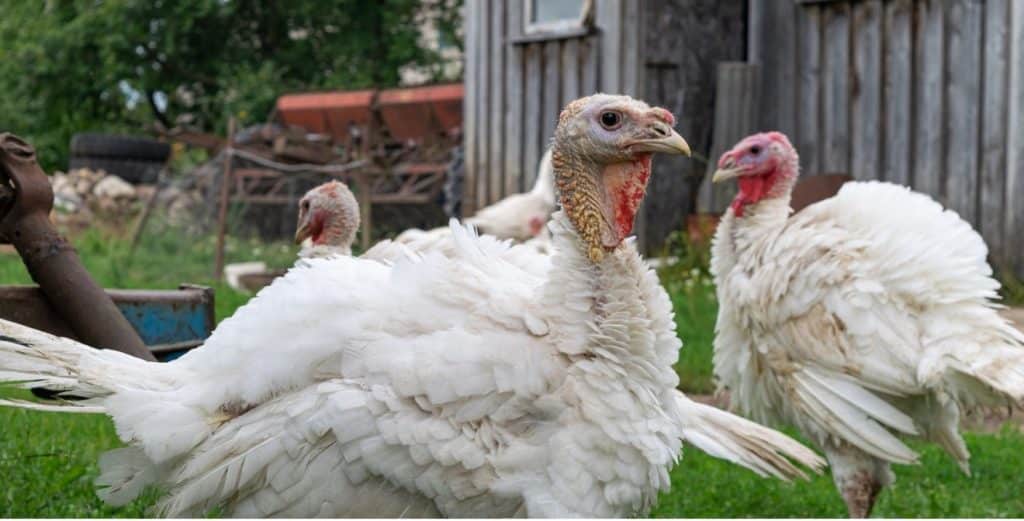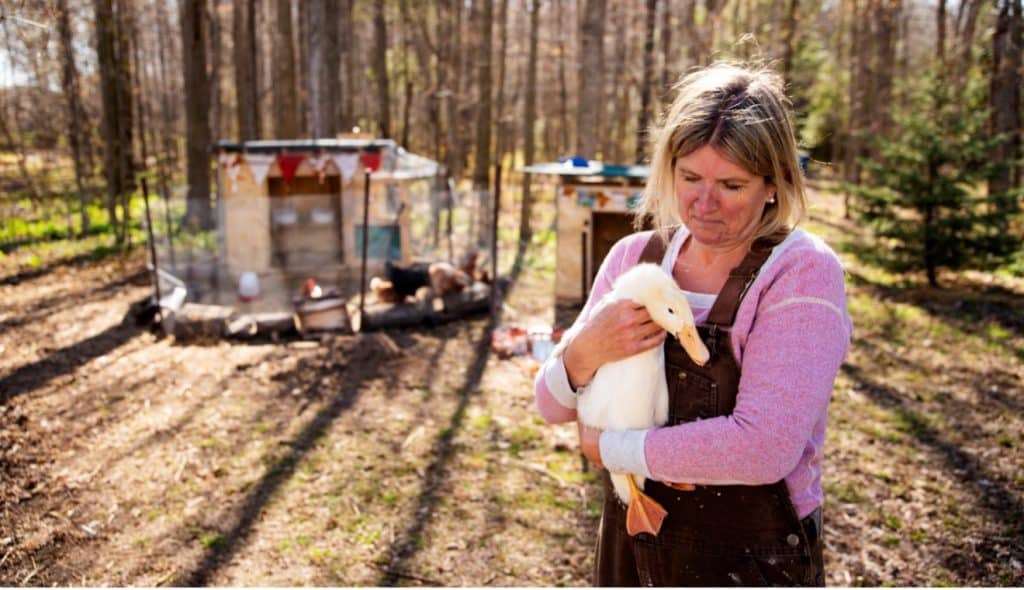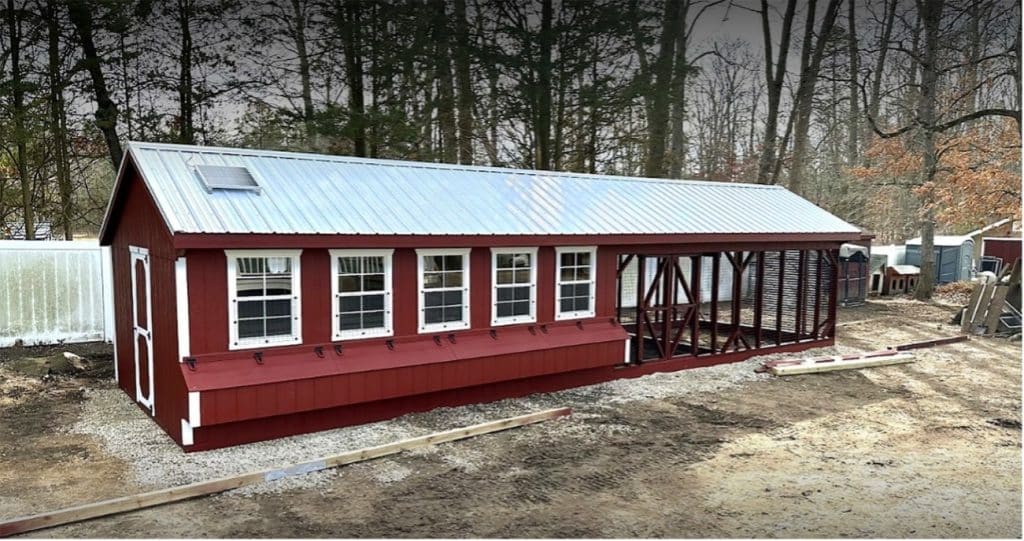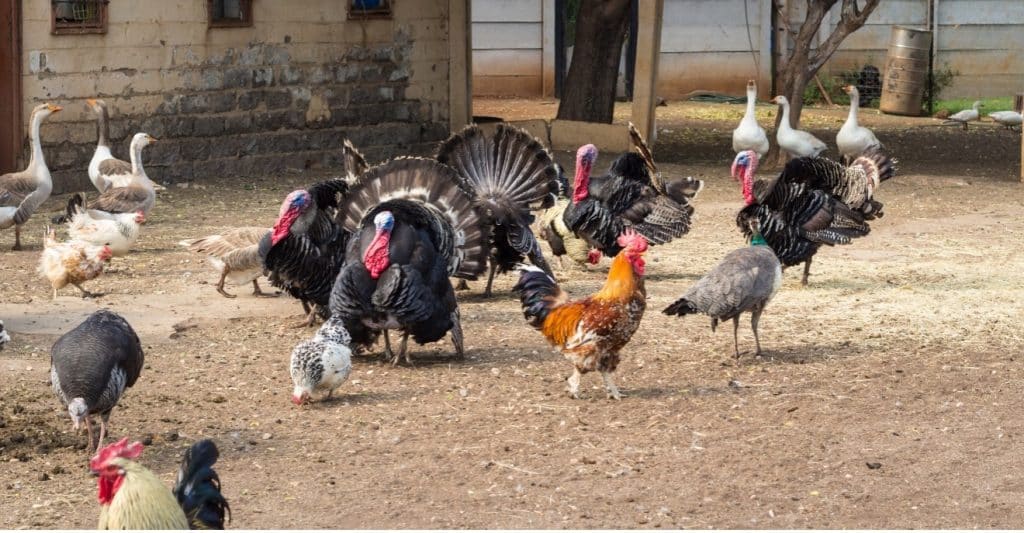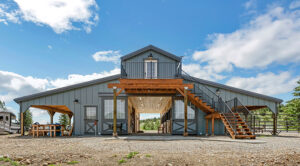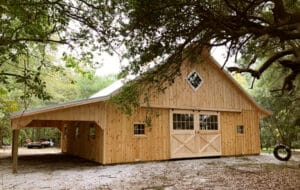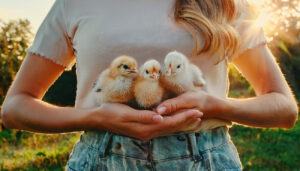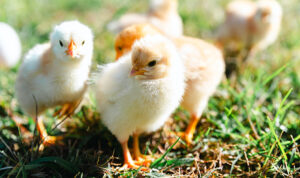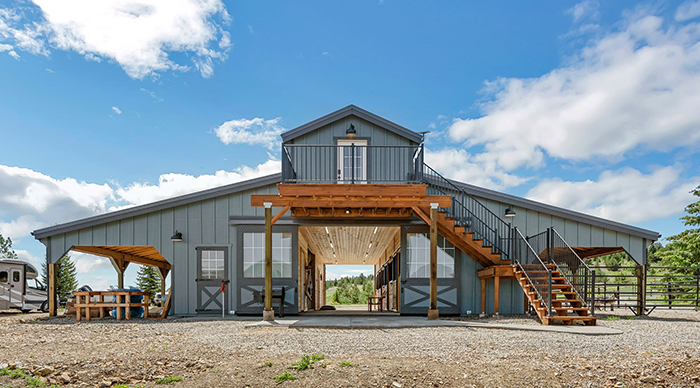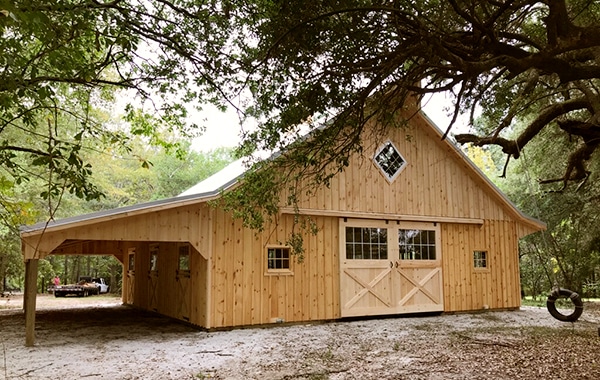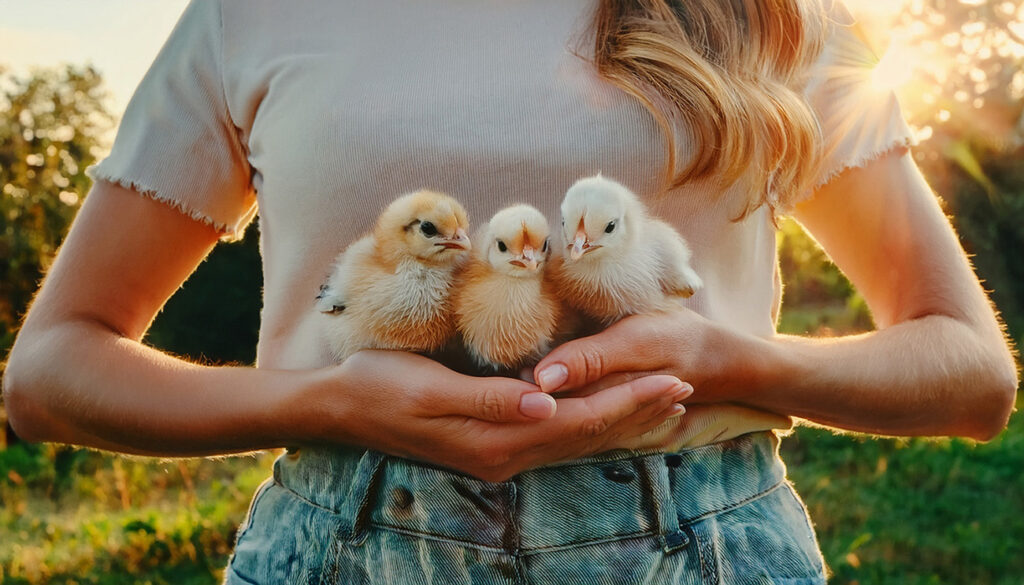The precipitous rise in egg prices and the upward trending interest in becoming more self-sufficient in food production has homeowners of all sizes of properties avidly purchasing poultry.
If local ordinances don’t prohibit ownership of a gaggle of geese, a rafter of turkeys, or a flock of ducks or chickens, the selection of the best species of bird for egg-laying and meat production is something worth learning about before your heart rules your head and you find yourself buying chicks galore when you visit the local feedstore.
Bear In mind that many villages and more urban locations have a restriction on keeping cockerels/roosters and certain poultry due to their noise and odor but may still allow smaller chicken keeping operations.
The Pecking Order
Pecking order is a well-worn expression for a reason. It emanates from a quote from a Norwegian biologist referring to dominance hierarchies in chicken populations over a century ago and while keeping a mixed flock of birds is definitely very doable, paying attention to age gaps and how birds are introduced and hierarchy established is essential.
The best way to establish a happy hierarchy and mitigate the risk of bullying and infighting is to buy birds of the same age. Once the pecking order is established it will likely stay the same for the entire life of the flock.
But this ‘same age’ flock development is rarely practical from a management standpoint. Flocks are often added to as hens go broody and stop laying and the critters need replacement due to loss from predators, aging out of production or are culled for dining delights.
Careful introduction is needed when new birds are added to the population. This can be done by separating new members of the flock in an area adjacent to the existing brood and once used to each other allowing them to mingle gradually a few at a time for limited periods, increasing the direct contact as the birds get used to each other.
The likelihood of arguments erupting between birds will be increased if there are too many boys and not enough girls in the flock. The ratio for male: female needs are different depending on the species.
Geese and Goslings
Larger poultry like geese, can trample their smaller neighbors (inadvertently or by bullying).
Geese make excellent deterrents to certain predators such as canny cats, hungry hawks, sneaky snakes, rascally rats and other small predators. Due to their loud honking and good protective nature, geese can also make an effective guardian of a flock even against larger predators such as coyote and eagles, by raising the noisy alarm to alert the neighborhood of their presence.
However, neighbors may not appreciate the noise of the geese and geese can be harmful to inquisitive young children. Geese can and do bite.
Certain species of geese such as the American Buff Goose can be troublemakers. Some species are better goose ‘caretakers’ of the flock than others. The Tufted Roman, Chinese or Saddleback Pomeranian are good options to review for inherent less aggressive natures.
One male goose can provide good protection to smaller birds, but when kept in a gaggle it will also protect its nesting mate and progeny over the rest of the poultry population so be careful to separate breeding geese from the other poultry.
Turkey Time
A gaggle of turkeys are not much use for egg production although their eggs are edible. The main reason is they only lay once a year. A large clutch of 16 or 17 eggs is a maximum.
Outside of meat production the turkey can be useful as their presence can put aerial and others off attacking smaller birds like peafowl or chickens. But be careful about mixing their offspring together, as the timid poults may be bullied by the chickens’ chicks despite their size.
Because turkeys are larger poultry they necessarily eat more and make more mess than their smaller compatriots. When raising turkeys, a higher protein diet will be needed versus a chicken diet.
Turkeys are also apt to fly over fences and can become annoying to manage as a result.
Of course, all poultry can do damage to pristine lawns and flowerbeds, but those with larger feet like the turkey will naturally do more damage than their tinier counterparts as they avidly scavenge for insects.
Be aware that gaggles of turkeys are also more prone to disease than chickens. A prime example is the turkey species commonly suffers histomoniasis, or blackhead when raised with chickens.
Turkeys, especially heritage breeds are generally very friendly. But their preferred roosting spot is high in a tree not in a coop so enticement to ‘bed’ down in the coop at night can be problematic.
Keeping one turkey is not kind, as turkeys prefer the companionship of at least one other of their species.
Just Ducky
Ducks and chickens can certainly be kept together but be aware that like turkeys, ducks can be difficult to train to come into the coop at night. This is because ducks have good night vision and their instinct to seek shelter at nighttime is less developed.
Ducks and geese and other waterfowl don’t need to have a pond or direct access to a large body of water to be happy, but ducks may wander or fly off. Both species like to nest on the ground so they will either stay on the ground of the coop or you can enclose a fenced pen where they will happily sleep.
The downside of ducks and geese being water-oriented is that they can make the coop wet. As moisture is not ideal for chickens, waterers inside the coop or enclosed area are better off being nipple design styles than open containers where ducks can ‘duck and dive’ their heads in and out, both causing a mess and making the water dirty.
Space To Roam and Sleep
Provision of plenty of space for each species to roam is essential to maintain good relations both within the flock and between different species of poultry.
Consider purchasing a chicken wagon or Egg-Roll coop to keep birds at pasture and on the move. This can help manage overgrazing; minimize lawn/grass or flower bed damage; provide fertilizer for the pasture; and offers protection from predation.
Smaller birds should also be provided with an ‘escape’ area that only their species can occupy to de-stress their lifestyle and to help avert in-fighting and bullying.
Breeding birds in any species will be more likely to fight with others, and young birds will likely be more active and challenging within a group as they age up until maturity is reached.
Large birds such as turkeys, geese and ducks will obviously require a bigger coop or run space than a chicken. Ducks and geese require no roost bar while their space needs may be 4-8 square feet per animal while chickens will need a roost bar and place to roost but only need 3 square feet of space per animal to be content.
Consider the size of both the interior coop space and the exterior ‘safe’ run space of the coop with due care if you plan to mix species within a confined space. The avoidance of cramping too many birds of any type in one space should be avoided to maximize harmony within the group.
Menus
Different species of poultry all have differing dietary needs.
Protein rations, quantities of feed and even types of food delivery such as pelleted feeds versus pure grains etc. all need to be considered for the successful management and the good health of the entire population. For example: chick starter may be good for chickens but not for ducklings or goslings.
Thoughts To Take Home to Roost
Before you mix your poultry population species diligent research is a necessity if you want to avoid surprises and negative experiences when you bring those cute chicks home to roost.
There is much joy and entertainment in watching ducks play in the garden or a gaggle of geese see off an annoying intruder. But be cognizant that in addition to each family, genus, and species all animals are individuals with different needs and personality traits.
Changes in environment, flock dynamics and even their caregivers can all add stress to a flock causing a decline in egg-laying production or cause negative aggressive behaviors.
The availability of fresh eggs daily with a known provenance is a rewarding aspect of poultry keeping, but likely not very cost effective versus buying commercially produced eggs when the real expenses for the coop, run, birds, feed, and medical care are investigated.
Even if you are not interested in the egg or meat production benefits of keeping and purchasing poultry, their presence for controlling pesky insects around the farm and serving as a ‘living’ alarm service warning of visitors or predators as well as entertainment value, are all good reasons to introduce them into your homestead lifestyle.


